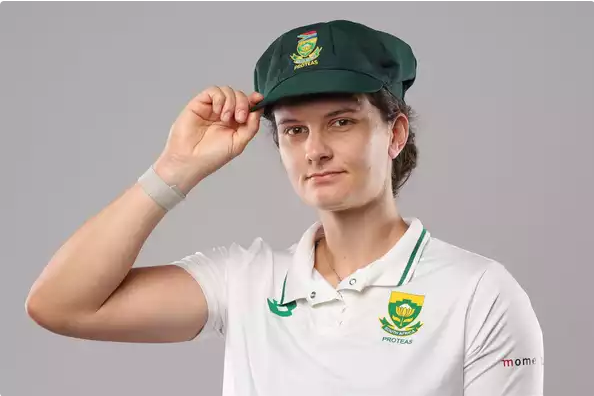Laura Wolvaardt has advocated for improved red-ball preparation amid the rise in Women’s Tests.

Laura Wolvaardt has advocated for more Women’s Tests, emphasizing the need for red-ball cricket to be integrated into South Africa’s domestic calendar to enhance preparation and skill development.
Currently on a multi-format tour of India, South Africa is set to play their second one-off Test of the year in Chennai starting Friday (June 28), with a third scheduled later against England.
Earlier in Australia this year, South Africa suffered a significant loss in the only Test of a multi-format series, having not played red-ball cricket for 18 months.
Their return to Test cricket occurred during the 2022 tour of England after an eight-year absence from the format.
Wolvaardt highlighted the challenge of preparing for Tests without sufficient domestic red-ball opportunities, calling it far from ideal for adapting to the longest format.
She expressed hope that a strong showing in Chennai could help break the cycle of limited preparation.
“We would love to perform well and make it an exciting match to watch, but it’s a bit of a chicken and egg situation,” Wolvaardt remarked.
“Should we focus first on increasing domestic cricket and preparation to ensure Tests are more compelling, or should we begin at the international level and build from there if it proves exciting? Naturally, we aim to excel, carry momentum into our home Test later this year, and hope for the best.”
The upcoming home Test against England will mark South Africa’s first since rejoining the Test arena two years ago and their first at home since hosting India in early 2002, a significant milestone for the current Proteas Women’s squad.
Despite India being the only other active women’s Test-playing nation with a structured domestic red-ball setup, Wolvaardt expressed optimism that discussions are ongoing among higher authorities regarding this crucial matter.
“While I haven’t been directly involved in such discussions, I trust they are happening at higher levels,” Wolvaardt affirmed.
“To compete effectively in international Tests, we need adequate red-ball preparation.
Entering an international Test match without recent red-ball experience, apart from the few Tests most of us have played, is extremely challenging.”
Reflecting on the difficulties of transitioning to international Tests with minimal prior exposure, Wolvaardt elaborated, “Stepping directly into a multi-day international game is tough.
Instinctively leaving deliveries that I’ve cover-driven all my life becomes a battle.
Either we significantly increase Test cricket and integrate it into domestic training, or we reconsider our approach, as playing one Test every few years is hard to adapt to.
But I am in favor of expanding its presence.”
Despite a recent ODI series whitewash in Bengaluru, Wolvaardt noted that starting with 50-over matches helped ease South Africa into Test mode rather than facing the reverse scenario.
She acknowledged the formidable challenge posed by India’s strong spin contingent in Chennai’s spin-friendly conditions, emphasizing the significance of adapting to unfamiliar playing conditions.
“Women’s Test cricket remains relatively uncharted territory for both teams, given our limited experience,” Wolvaardt admitted.
“India holds a considerable home advantage.
Winning a Test here presents a major challenge, but one we are eager to tackle head-on.”
Regarding batting challenges against spin in unfamiliar conditions, Wolvaardt expressed confidence in South Africa’s spinners, particularly Nonkululeko Mlaba, anticipating a competitive showing from them on the upcoming pitch.

Leave a Reply